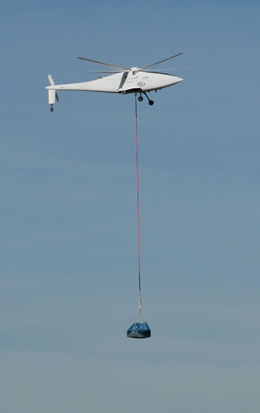

The U.S. Naval Air Systems Command (NAVAIR) has awarded Boeing [NYSE: BA] a contract worth close to $30 million for the delivery of unmanned cargo aerial vehicle services supporting U.S. Marine Corps in Afghanistan. The service also awarded Lockheed Martin/Kaman, the competing team, a $45.8 million contract for a parralel development of the heavier, unmanned KMAX platform.
Under the contract Boeing will provide two A160T Hummingbird unmanned vehicles, three ground control stations, spares, training and support. The A160T aircraft designated for the contract are being completed at the new production line launched by the company in Mesa, Ariz., March 2010.
In order to meet the operational needs of the Marine Corps, the Navy made a decision to award two contracts to reduce potential deployment delays and inability to meet performance requirements. The Navy will conduct a Quick Reaction Assessment (QRA) in summer 2011 to prove systems’ ability to sustain cargo-carrying capability in an operational environment. Immediately following a successful QRA, one contractor’s in-country service option will be exercised and their system will deploy to Afghanistan.
The Navy intends to field Cargo UAS in fall 2011 for a six-month deployment. After the initial deployment, Navy and Marine Corps leadership will assess the value of the capability and determine if an extension or re-compete contract should be pursued.
These unmanned vehicles will be owned by the government-owned, but will be supported by the manufacturer under the new contract. The contract calls for a period of predeployment operations at a military facility in the continental United States, followed by options for a six-month deployment to Afghanistan.
















